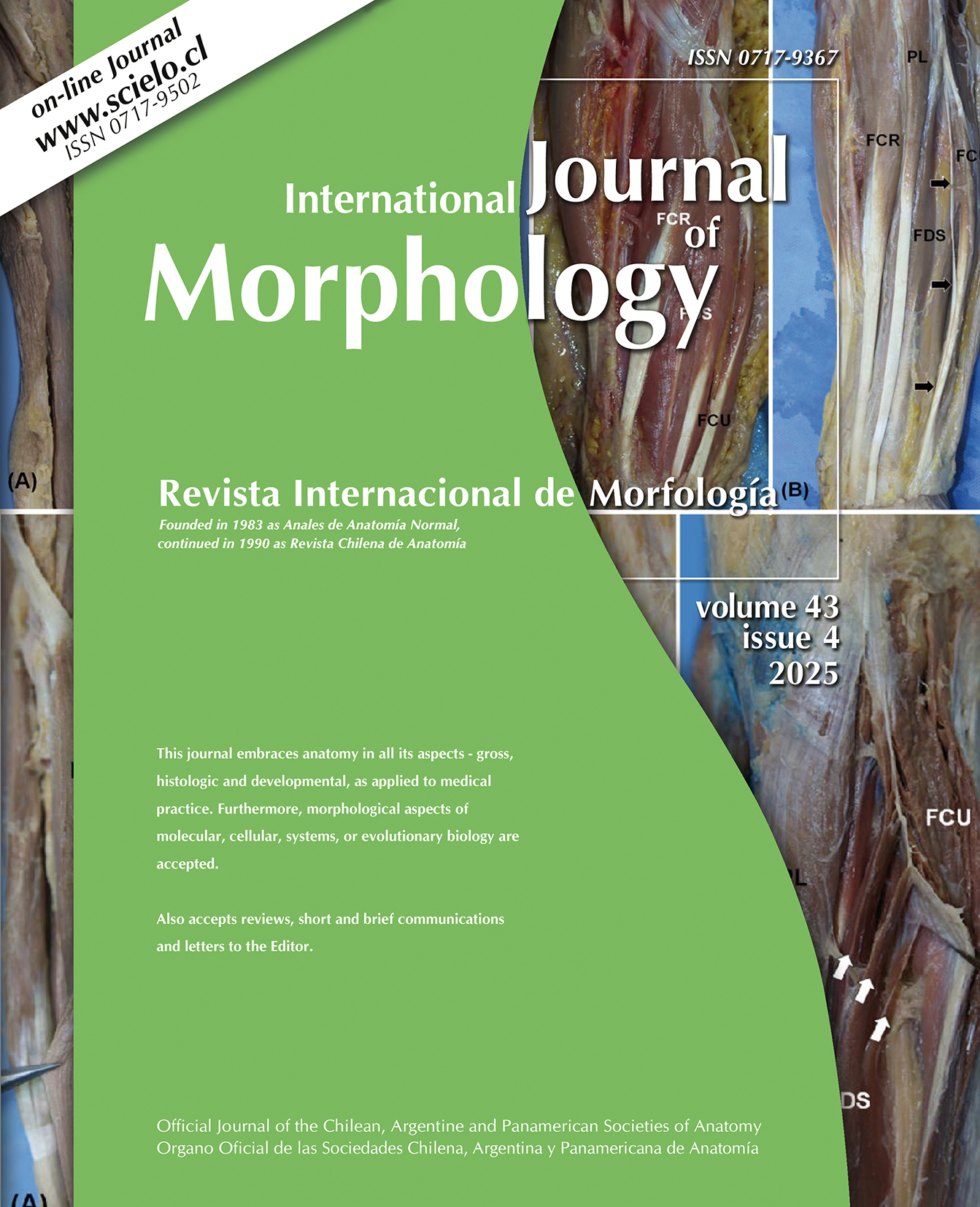Unilateral Anatomical Variation of the Ischiatic Nerve and Implications in Piriformis Syndrome. Case Report
Ignacio Isbej; Esteban Sepúlveda; Juan Carlos Almonacid & Sofía Venegas-Vilches
Summary
Ischiatic nerve (IN) compression causes weakness, pain, and loss of sensation in the back of the thigh, leg, and foot. This compression may be due to muscle contractures, such as in piriformis syndrome, where the piriformis muscle compresses the IN. The IN emerges from the pelvis towards the deep gluteal region, passing inferior to the piriformis muscle. This nerve continues a descending path. Upon reaching the popliteal region, it divides into its two terminal branches, the tibial nerve (TN) and the common fibular nerve (CFN). Numerous authors have reported variants in the emergence of the IN towards the gluteal region, Beaton & Anson (1937), have classified the variants into 6 classifications, however, later authors have found variants that do not fit this classification. The objective of this study was to expose an unreported variant, describing it anatomically and relating it to piriformis muscle syndrome. For this, a formalin-fixed corpse was used, belonging to the morphology laboratory of the Bernardo O'Higgins University. A dissection was performed in planes until reaching the deep gluteal area, where the relationship of the IN with the piriformis muscle was observed. It was found that on the left side, the IN emerges bifurcated into its two terminal branches, the CFN transits inferior to the piriformis muscle and the TN transits inferior to the obturator internus muscle, the right side does not present variations. The results obtained contribute to the anatomical knowledge of IN variations in its emergence, and are useful for rehabilitation and surgical procedures that seek to treat piriformis muscle syndrome
KEY WORDS: Ischiatic nerve; Piriformis muscle; Anatomical variation; Common fibular nerve; Tibial nerve; Piriformis syndrome.





























